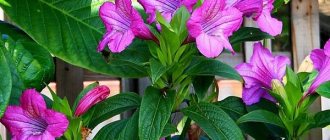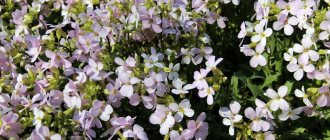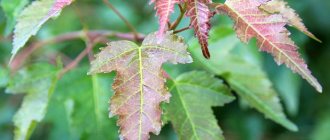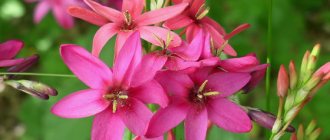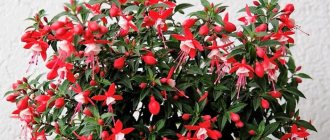Varieties for growing in a pot (description with photo)
Any type of juniper will take root at home, but few people are able (or have the opportunity) to dedicate an entire room or most of it to the needs of one plant. Therefore, only a few varieties are often chosen for home cultivation .
Compress
In open ground conditions, this variety with a symmetrical columnar crown can reach a height of 3 meters. However, in indoor conditions its size is three times more modest. The crown is dense, colored light green.
Juniper durum
In nature, representatives of the species can grow more than 7 meters. The crown can be elliptical, pyramidal or columnar. The needles are hard, dark green, with a yellowish tint.
Plumosa aurea
The dwarf shrub variety seems designed for growing in a pot. Its yellowish-green needles tend to darken with the onset of winter, which gives the plant additional charm.
Attention! The bush easily grows to the ceiling, so it requires systematic pruning.
Depressa aurea
Common juniper is also suitable for home keeping. Its short stature allows it to be kept indoors, but this bush also requires regular pruning.
Wiltoni
A low creeping shrub, which in closed ground must be constantly pruned to form a beautiful crown.
Glauka
A subspecies of Cossack juniper growing in breadth. It has bluish-green needles with a specific odor. It has an average growth rate.
Old gold
The foliage is scaly and tends to change color with the onset of cold weather. The plant is classified as a medium-sized variety of juniper, which makes it suitable for indoor keeping.
Frost-resistant plants on the balcony
It is unlikely that it will be possible to set up a winter garden on an open balcony if it is located in a cold climate zone. The maximum that can be done is to decorate it with spruce compositions.
But on closed, glazed loggias there are much more opportunities. The snow doesn't cover them. Temperature may fluctuate. If the thermometer behind the glass drops to minus 10°, on the balcony it will be positive. When there is severe frost outside, down to 25 - 30°, on the insulated balcony the temperature will be down to minus 5°. There are plant species that do well in this temperature regime.
Winter plants for a glass balcony
Winter plants for the balcony should be selected depending on your location, climatic conditions and living conditions.
- Citrus fruits can winter at a temperature of + 7°.
- Cacti are very adaptable plants. They can not only tolerate drought, but most species thrive at temperatures of +5, and some of them are not even afraid of frost.
- Plants such as laurel, pelargonium (geranium), fuchsia, hydrangea, chrysanthemums, boxwood are adapted for temperatures of + 5-6°.
- Camellias can decorate your balcony in winter; they tolerate temperatures down to minus 5°. Ideal conditions for it are a balcony, where the temperature is from 0 to 15°.
- Coniferous plants: araucaria, thuja, cypress, cryptomeria. The temperature for keeping them in winter is +6-10°.
Each flower or shrub requires individual conditions, so let’s look at how to care for the most popular frost-resistant winter plants.
Evergreen balcony plants are not only conifers, but also climbing and deciduous shrubs. They don't always have to be green. Many of them are distinguished by colored leaves or multi-colored needles. The main thing is that you can admire them all year round.
Ivy
Growing slowly, it forms a dense dark green wall. Regular ivy can be used for planting against a railing or shaded wall on a balcony.
There are no high demands placed on ivy. Varieties with dark leaves prefer shady areas, while varieties with colored leaves can be grown in full sun. Then their leaves change color more beautifully. In harsher winters, ivy freezes easily.
Therefore, the boxes and pots in which they will be planted should be lined with insulating material, such as bubble wrap or polystyrene foam, to protect the root from frost. Universal soil for flowers, with added calcium, suitable for ivy. On hot days you need to remember to water.
Periwinkle
Periwinkle is an evergreen shrub with creeping shoots. The shoots are densely covered with small dark green shiny leaves. Many varieties have colorful decorative leaves, such as Aureovariegata with yellow leaves or Illuminare with yellow leaves edged with green. In May and often again in August, charming flowers appear in the leaf axils, which, depending on the variety, can be blue (La Grave), purple (Atropurpurea) or white (Gertrude Jekyll).
Periwinkle loves shady places, but varieties with speckled leaves, on the contrary, do well in sunny places. Depending on the conditions on the balcony, the choice of periwinkle varieties is quite large.
Periwinkle requires minimal care. It is enough to give it a constantly moderately moist substrate. Looks very nice in hanging pots, large wooden or rattan boxes and in compositions with other shade-loving plants.
Cyclamen
This is a plant with beautiful flowers of different colors and leaves with green and silver patterns. It not only tolerates cold well, but also blooms in winter.
It is important to always remove wilted flowers along with the stem and water them, pouring water only into the plate on which the pot stands.
Hellebore
The Christmas rose remains green all year round, is only 30 centimeters tall and blooms from autumn to early spring. The flowers are colored white, pink, green or purple and even after the flowering period the plant will be impressive thanks to the seed pods.
Christmas rose (Hellebore) on the balcony - care tips
Recommendations for planting
Caring for juniper at home is not difficult, but there are several basic recommendations that, if followed, will make it easier to keep exotic plants in a limited space.
The biggest difficulty in growing at home is maintaining a balance between good lighting of the bush and sufficient air humidity . Juniper is generally tolerant of the composition and quality of the soil, but soil moisture plays a decisive role in its development.
Preparatory work
The soil can be purchased at a flower or garden store - these are ready-made substrates for coniferous plants . You can make the soil yourself by mixing in equal proportions:
- turf land;
- coarse river sand;
- peat.
Expanded clay or small pebbles are placed as the first layer on the bottom of the pot to form a drainage layer. As a top dressing, humus or nitroammophoska is added to the soil mixture. A small amount of vermiculite will give the soil the necessary looseness.
Suitable pot for juniper
While the plant is very small, plastic containers will be sufficient. But over time, when the size of the bush increases, the flowerpot will need to be replaced with a heavier one.
Attention! Do not take small pots for juniper (as for a regular flower). He needs a capacious container, whose volume will exceed the size of the root ball at least 2 times.
Try to give preference to tall, stable clay containers that will definitely not topple along with the bush under the weight of the crown.
Consider the need to remove excess moisture - the pot must have drainage holes.
Landing technology
The optimal time for planting a young plant is spring . During the active growing season, the bush will have time to fully acclimatize to the growing conditions, which will reduce the risk of plant death.
The method of transplanting/planting juniper at home is a simple procedure, but it requires attention.
How to plant juniper:
- The pot must be washed and disinfected the day before work, so that it is dry by the time of planting.
- Place a drainage layer (at least 1 cm) at the bottom of the pot.
- Carefully remove the plant from its previous container, being careful not to damage the delicate root system.
- Carefully place the plant in its new home.
- Fill the free space between the walls of the pot and the root ball with prepared soil and compact it a little.
- Place the root collar above the ground surface.
- Approximately 15–20 minutes after planting, the plant can be watered.
Attention! The juniper will also gratefully accept spraying from a spray bottle.
Select a place for the plant that is well lit, but without direct sunlight and drafts . To soften the dry air, it is recommended to place the juniper pot in a pan of water.
About practical benefits
Widespread uses of bergamot:
Without this oil, it is difficult to imagine aromatherapy, a relaxing massage that will help restore strength and recover from depression.
It is still an excellent antiseptic. With its help you treat acne and rashes, even age spots. And with severe wounds just placed in the patient's place, you cut the fruit.
Bergamot oil contains ingredients that lower fever, reduce the effects of bronchitis or asthma, relieve sore throat, and relieve sinusitis. At the same time, the body is resistant to infections and other viruses.
Restores appetite, removes toxins, even parasites. It is also an excellent pain reliever.
You already know about bergamot tea. There is a legend that during a terrible storm on a ship with broken oil barrels, oil gets onto the tea balls. And from here new and today so popular varieties of tea “Lady Gray” and “Earl Gray” appeared, which can be purchased in every store.
This aromatic, slightly spicy drink is characterized by a delicate taste, soothes, helps relieve fatigue, even stress. If you have trouble waking up in the morning, be sure to drink a cup of this tea.
But this is not the only benefit. Have you tried the jam made from his skin? It is rightfully very popular in Greece. And in Italy, bergamot fruits, which are widespread here, are used as raw materials for jam.
- In cosmetics and perfumery.
First of all, these are perfumes, shampoos and soaps, ointments and creams. But nothing beats the best perfumes, and bergamot oil is the perfect complement.
“Coco Noir and Coco Mademoiselle Chanel, Miss Dior, Amor, Klima and even Red Moscow - all these legendary perfume brands contain bergamot oil in their compositions. In addition, it perfectly destroys lice and fleas, repelling insects.
How to care
In order for a plant to feel comfortable indoors, it needs to create favorable conditions , since they are not very different from the conditions of keeping other indoor plants.
View this post on Instagram
Publication from About the garden and home (@pro_sadidom)
Watering and spraying
regular but moderate watering .
Important! Dry soil in a pot or constant excess moisture will lead to the rapid death of the bush.
Water, focusing on the surface layer of soil. As soon as the top layer has dried, pour it with settled water at room temperature. After the liquid has been absorbed, the soil must be carefully loosened - this will prevent the formation of a hard, airtight crust.
Air humidity is an important parameter when growing juniper in an apartment . The room air, dried out by central heating devices, is too dry for the bush. Daily spraying or installing an automatic humidifier next to the juniper will help save the situation.
Top dressing
Excessive feeding can lead to the death of the bush, since in its natural environment juniper often grows on poor, rocky soils. Fertilizing is always applied along with watering . To feed home plants, use ready-made complexes of microelements or a humus solution.
Trimming
A houseplant requires close attention from the grower to its crown . Even if in closed ground conditions the juniper does not grow to the size it could reach in natural conditions, but excessive growth of the crown will reduce the growth rate and lead to thickening of the crown.
Pruning is best done at the very beginning of spring . Remove all dried and broken branches and shoots oriented inward of the crown. Reduce the length of the main branches by a third.
Important! Do not try to cut off everything that catches your eye at one time - this is a huge stress for the plant. It is better to remove part of the branches in the fall before the onset of the dormant period than to bring the plant to death by total spring pruning.
Wintering
At the end of autumn, juniper needs to create favorable conditions to enter the dormant period. It is optimal to move the pot with the plant to a cool room where the air temperature will be within 10...12 °C.
Watering is reduced to a couple of times a month, and spraying is also stopped. The application of fertilizing is also cancelled. In this state, the bush will winter until the end of February.
Transfer
Young plants up to 3 years old are replanted annually in the spring . This is due to the increase in the root system, which requires a larger pot volume. Adult bushes try not to replant unless absolutely necessary, limiting themselves to replacing the top layer of soil.
Reproduction
Preparing cuttings for propagation
Juniper propagates by seeds or cuttings. You can try growing your own seedlings.
But it should be taken into account that growing seeds from seeds is a labor-intensive process, their germination rate is low, so it is better to produce more seeds from cones.
Seeds are collected in September and planted outdoors or in a box. Take some soil from under the mother plant and mix it with the soil.
The box should remain outside for the winter, the seeds should be planted in layers. Some seedlings do not appear in the first spring, but only next year. The seedlings will not be ready for transplanting until 3-4 years.
It is important to know that many ornamental juniper species do not reproduce by seeds.
You may also be interested in an article about Tamariks: //6.com/landshaftnyj-dizajn/landshaftnyj-dizajn//tamariks.
The slurry is prepared in late summer or early summer, placed in a greenhouse where soil is added under a mature plant or juniper needles, or covered with a juniper jar.
It is necessary to provide moisture and regular irrigation. In the fall, the shavings are replanted with roots, then replanted and left at home for the winter, taking into account temperature conditions.
Juniper can be grown at home realistically, the most difficult thing is to ensure the correct temperature in winter. If this is possible, then the needle-shaped plant will delight the eye for a long time and will decorate the house.
A spear can be useful in everyday life. Its branches, which are displayed in cabinets, are an effective property of moths. And the berries are used in folk medicine for medicinal purposes.
In the following video you will learn all the secrets of caring for juniper and growing it at home:
Page 2
Many people know what Tamarix is, planting and caring for this plant is not difficult, and their photographs confirm that it is very difficult to find more beautiful decorations for landscape design.
Many plants seem to have been created by nature to please the eye.
And this category includes tamarisk or, as it is also called, pearls.
.
The elegant branches of Tamarix are compared to emeralds and are covered with flowers of different shades. It all looks charming. The beauty of the bush is especially noteworthy during the flowering period, when it is covered with pearls between the scales of green leaves.
What to do if the juniper at home dries out
The needles of a house plant may turn yellow due to several reasons.
| Cause | Elimination |
| Excessive dry air | Install an automatic humidifier / mist regularly |
| Stagnation of water in the pot | Reduce watering frequency |
| Excess microelements | Reduce the frequency of feeding to once a month |
| Insect pest infestation | Treat the bush with insecticides |
Inspect the plant, identify the cause of the appearance of dry twigs and act based on the inspection results.
Conifers in compositions and individually
Conifers in pots on the balcony and terrace look great individually or in the company of other plants . Even a small group of coniferous plants looks quite impressive. You can combine and mix different shapes - columnar, spherical and creeping. In addition to varieties with green needles, there are also silver, golden, yellow and blue-gray ones. Thanks to this variety, you can create multi-color compositions.
On a large terrace, you can create a hedge in containers from columnar thujas or junipers planted in tubs or long wooden boxes. In large tubs and wide boxes you can create a real small alpine garden on the balcony. You should choose varieties and species that grow fairly slowly, and supplement the entire composition with perennials. All it takes is imagination and desire, followed by careful care.
The choice of coniferous plants for a balcony or terrace is huge - everyone will find something for themselves. Varieties with a variety of needle colors can be combined with other conifers or perennials and small evergreen or leafy shrubs. Conifers look great in combination with seasonal flowering plants . It is worth remembering that taller specimens should be planted at the back of the pot, and with low shoots - at the front. Due to different needs for water and fertilizers, they should be planted in a separate container, and also watered and fertilized separately.
Is it possible to keep juniper at home?
The signs about juniper are not the most joyful - they predict a quick separation or even death for the owners of the exotic. However, the essential oils emitted by juniper needles can purify the air from harmful bacteria . Whether to follow folk wisdom or believe modern science is a choice everyone makes for themselves.
Appearance
Prickly but beautiful juniper.
The illustration for the article is used under the standard license sadvokrug.ru. Originally from India and Asia, a small coniferous evergreen shrub 1-4 m in height. The trunk is straight with gray-brown cracking bark, the lower branches are ascending or prostrate, the rest are erect. The needles are sharp, hard, prickly. Female cones are green, male cones are yellow. The cones ripen in the second year of life, they contain seeds, which, when ripe, form berry-shaped bluish-black fruits with a blue coating - “cone-berries”.
The smell when rubbing the cones is peculiar, aromatic, the taste is sweetish and spicy. Juniper cones contain essential oil that has disinfectant properties. Baths are especially useful for arthritis, gout and rheumatic diseases (2 kg of young branches and a handful of berries, pre-boiled in bath water).
